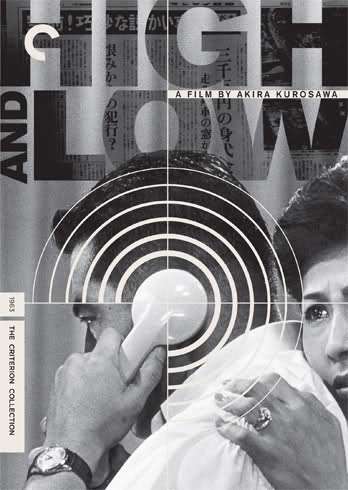Quote:
Lured by gold, two greedy peasants escort a man and woman across enemy lines, not realising that their companions are actually a princess and her general.Read More »
Akira Kurosawa
-
Akira Kurosawa – Kakushi-toride no san-akunin AKA The Hidden Fortress (1958)
1951-1960AdventureAkira KurosawaDramaJapan -
Akira Kurosawa – Rashomon (1950)
1941-1950Akira KurosawaAsianDramaJapanPlot:
As the film opens, three characters seek shelter from a driving rainstorm (it never sprinkles in a Kurosawa film!) beneath the ruined Rashomon gate that guards the southern entrance to the court capital. As they wait for the storm to pass, the priest (Minoru Chiaki), the woodcutter (Takashi Shimura), and the commoner (Kichijiro Ueda) discuss a recent and scandalous crime––a noblewoman (Machiko Kyo) was raped in the forest, her samurai husband (Masayuki Mori) killed as a result of either murder or suicide, and a thief named Tajomaru (Toshiro Mifune) was arrested for the crime.Read More »
-
Akira Kurosawa – Shizukanaru ketto AKA A Silent Duel (1949)
1941-1950Akira KurosawaAsianDramaJapanSynopsis
Toshirō Mifune (in the second of many films with Kurosawa), plays a young idealistic doctor, still a virgin, who works at his father’s (Takashi Shimura) clinic in a small and seedy district. However, during the war, he contracts syphilis from the blood of a patient when he cuts himself during an operation. Treating himself in secret and tormented by his conscience and celibacy, he rejects his heartbroken fiancée without explanation.Read More » -
Akira Kurosawa – Tengoku to jigoku AKA High and Low (1963)
1961-1970Akira KurosawaAsianDramaJapanSynopsis
“Criterion” wrote:
Toshiro Mifune is unforgettable as Kingo Gondo, a wealthy industrialist whose family becomes the target of a cold-blooded kidnapper in Akira Kurosawa’s highly influential High and Low (Tengoku to jigoku). Adapting Ed McBain’s detective novel King’s Ransom, Kurosawa moves effortlessly from compelling race-against-time thriller to exacting social commentary, creating a penetrating portrait of contemporary Japanese society.Read More » -
Akira Kurosawa – Tora no o wo fumu otokotachi AKA They Who Step on the Tiger’s Tail (1945)
1941-1950Akira KurosawaAsianDramaJapan
The Men Who Tread on the Tiger’s Tail, the fourth film from Akira Kurosawa, is based on
a legendary twelfth-century incident in which the lord Yoshitsune, with the help of a group of samurai, crosses enemy territory disguised as a monk. The story was dramatized for centuries in Noh and Kabuki theater, and here it becomes one of the director’s lightest, most farcical films.Boris Trbic@Senese of Cinema wrote:
Akira Kurosawa’s They Who Step on the Tiger’s Tail is a film version of a twelfth century Japanese tale which forms the central narrative of the Noh drama Ataka and the popular Kabuki play, Kanjincho. Along with Sanshiro Sugata (1943), The Most Beautiful (1944) and Sanshiro Sugata-Part Two (1945), this is the fourth film Kurosawa shot during World War Two. He completed the script in only a few days, and, adhering to the strict regulations of the Japanese military authorities, convinced the producer that he would shoot the entire footage in one location. However, the filming coincided with the end of the war and Kurosawa completed the shoot during the early days of the American occupation.Read More »
-
Hisao Kurosawa – A Message from Akira Kurosawa: For Beautiful Movies (2000)
1991-2000Akira KurosawaArthouseDocumentaryHisao KurosawaJapanA Documentary in 10 parts covering the filmmaking of Kurosawa around the theme of making the perfect movie or as he says: A Beautyful Movie.
Kurosawa on filmmaking.
Chapter 1 – The seed of a film
Chapter 2 – Screenplays
Chapter 3 – Storyboards
Chapter 4 – Filming
Chapter 5 – Lighting
Chapter 6 – Production design
Chapter 7 – Costumes
Chapter 8 – Editing
Chapter 9 – Music
Chapter 10 – Directing
Read More » -
Akira Kurosawa – Something Like An Autobiography (1983)
1981-1990Akira KurosawaBooksJapan
Something Like an Autobiography
by Akira KurosawaPublished by Vintage | 1983 | 205 pages
Description:
Quote:
Among Japanese film makers, no one is perhaps as universally known as Akira Kurosawa.“Something like an Autobiography” is an account of the legendary director’s early life. It is only a partial account, encompassing his childhood, adolescenct years, the early years of his film career, up to the point of Rashomon. Nonetheless, the book benefits anyone keen for understanding the man behind such remarkable films as Seven Samurai, Ikiru, Rashomon, and Dersu Uzala among others. Kurosawa’s films were – Stuart Galbraith IV writes in the introduction to his book “The Emperor and the Wolf” – first and foremost, deeply humanist pictures, films which effortlessly transcend cultures and centuries. Something like an Autobiography helps one understand the evolution of the artist Kurosawa, the influences that shaped his vision.Read More »




